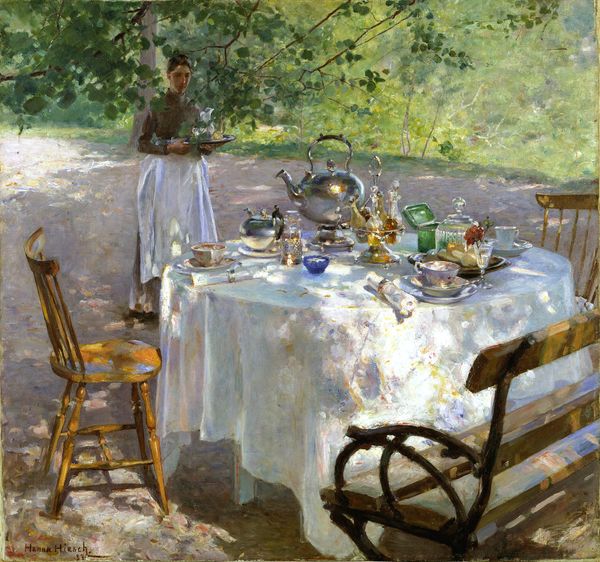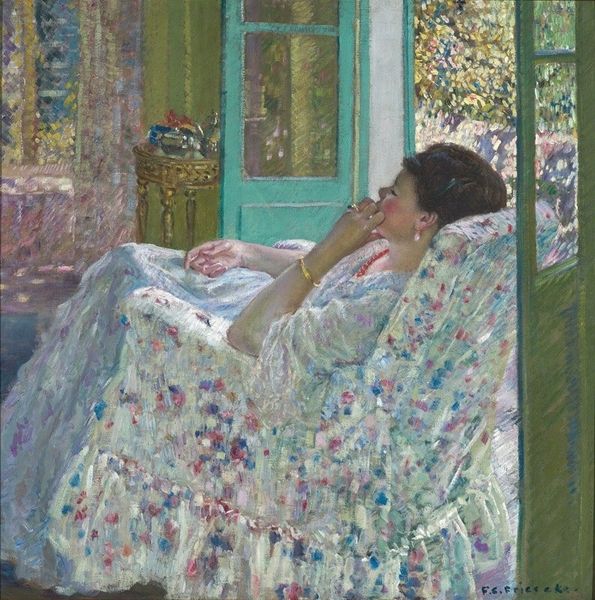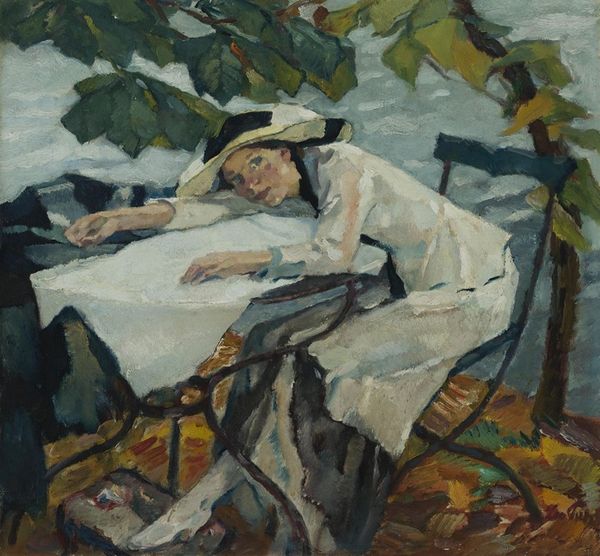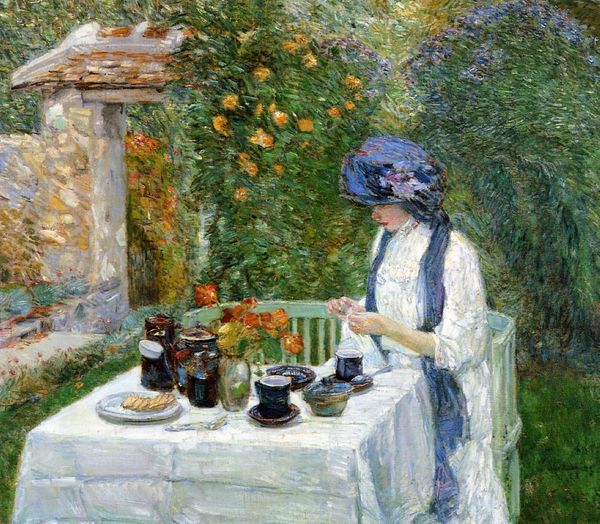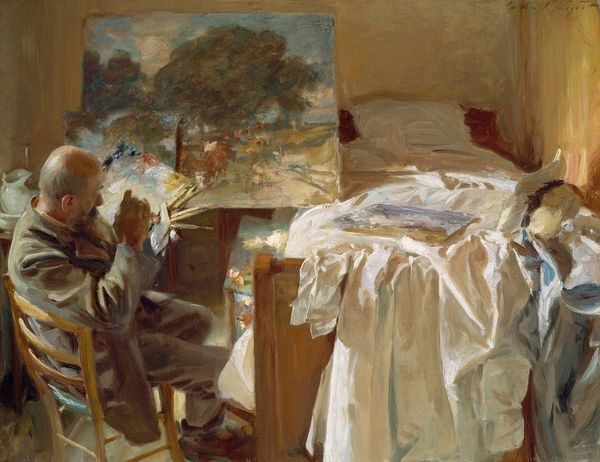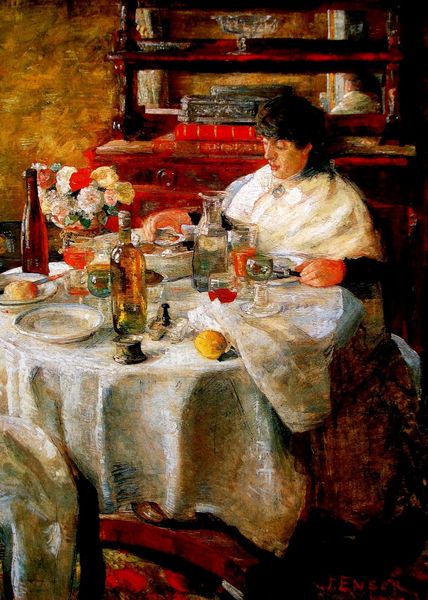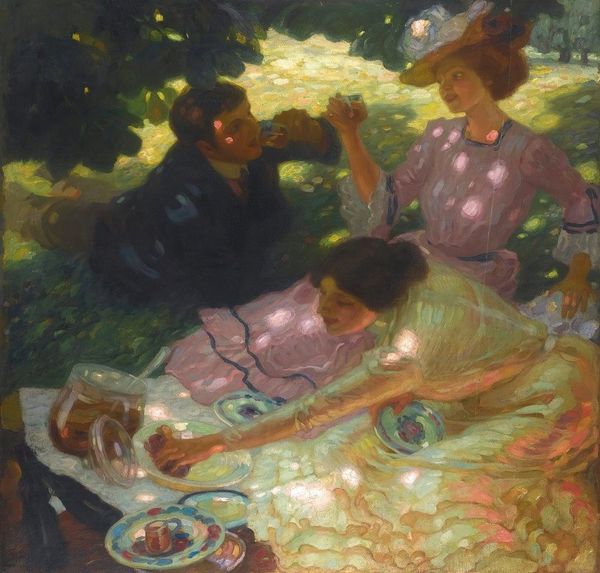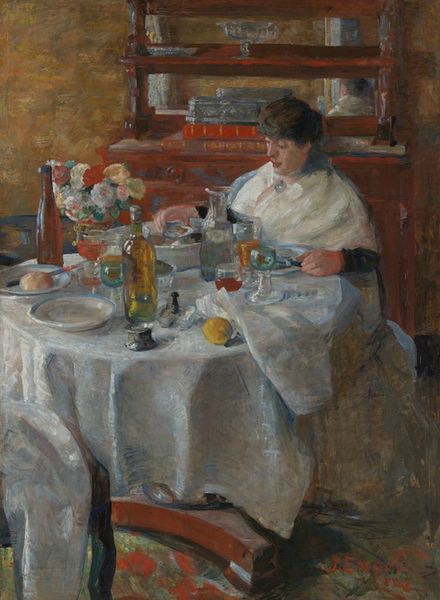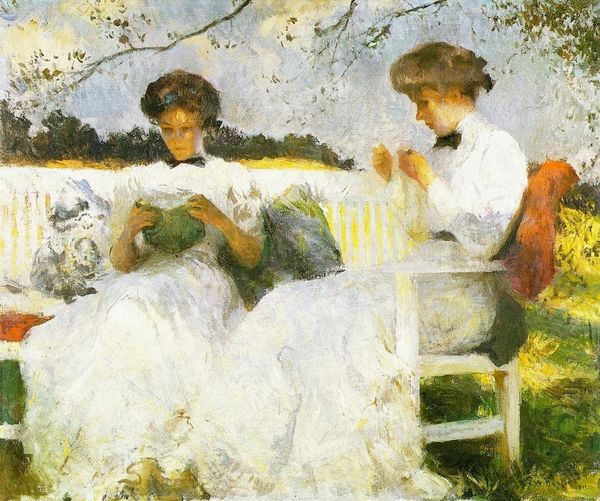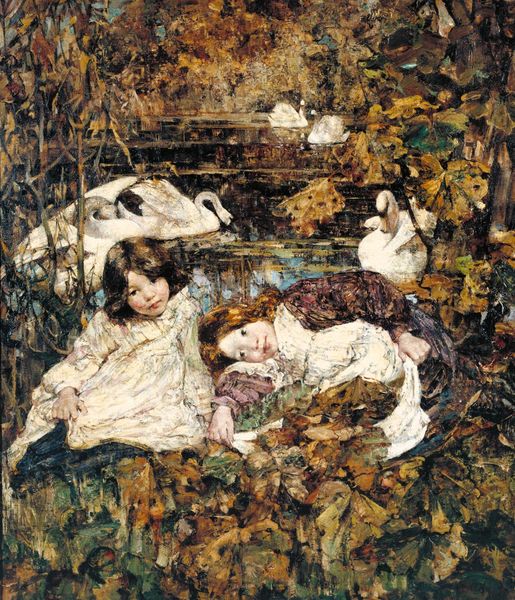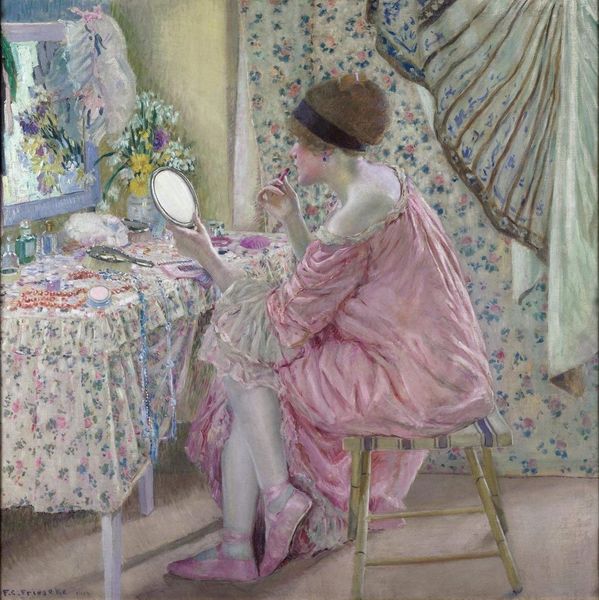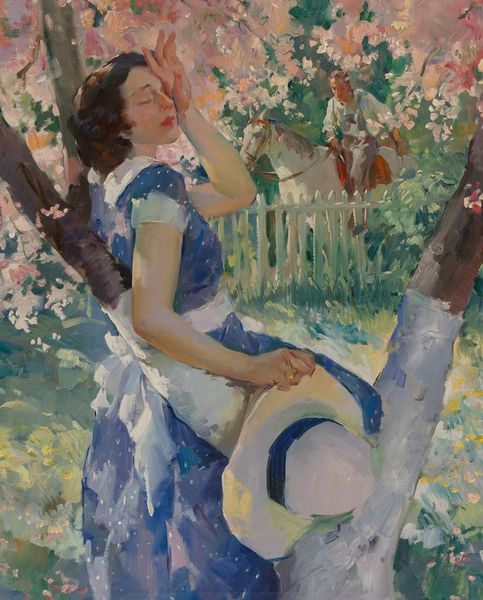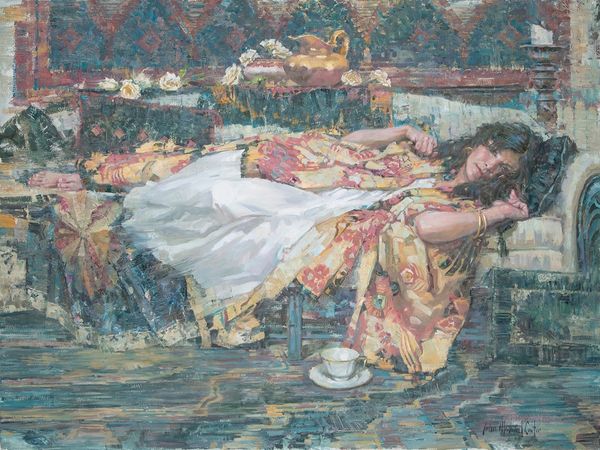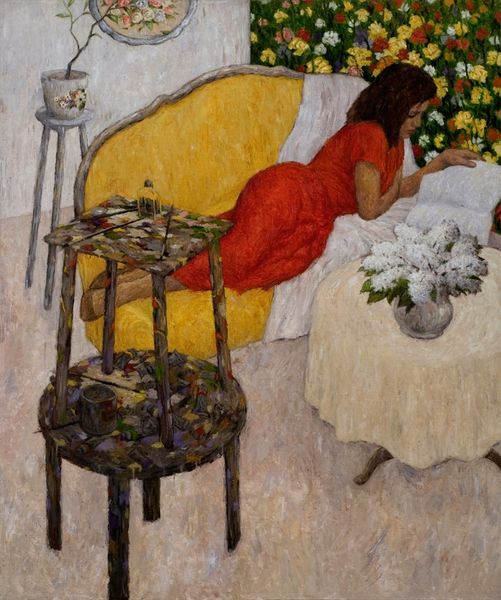
#
figurative
#
abstract painting
#
impressionist painting style
#
impressionist landscape
#
possibly oil pastel
#
oil painting
#
acrylic on canvas
#
underpainting
#
painterly
#
painting painterly
#
watercolor
Copyright: Public Domain: Artvee
Editor: This is Leo Putz’s “Late Autumn,” painted in 1908. It feels so… serene. The brushstrokes are soft, and the color palette is muted, almost dreamlike. What first strikes you when you look at this painting? Curator: The figure’s repose, that act of surrendering to slumber, resonates deeply. Consider the laden table. It’s not merely a still life. What do the teaware, the tablecloth, and especially those scattered apples *mean* within this context? Editor: Are you saying they’re more than just objects? That they might represent something? Curator: Precisely. Recall the symbolism of apples throughout art history, often connected to temptation, knowledge, or even a loss of innocence. Now, consider the drowsy figure amidst these symbols. What narrative might Putz be crafting here? Editor: Maybe she’s overwhelmed? Or perhaps, finding a kind of peace in the face of something... weighty? Like the knowledge you mentioned? Curator: Indeed. Note how the light falls, or rather, doesn't. It's diffuse, lacking harsh contrasts, enhancing that dreamlike quality you observed. Is this sleep a refuge, a moment of blissful oblivion, or a loaded pause before an awakening? What might these objects signify about the figure’s identity or circumstances? Editor: So, by looking at the symbols around her and the painting’s overall mood, we can start to unpack the deeper meaning the artist was trying to convey. It's more than just a pretty picture. Curator: Precisely. We recognize the power of images and objects to carry cultural and psychological weight across time. They evoke memories, both individual and collective. Editor: That gives me so much to think about, especially next time I look at any artwork.
Comments
No comments
Be the first to comment and join the conversation on the ultimate creative platform.
